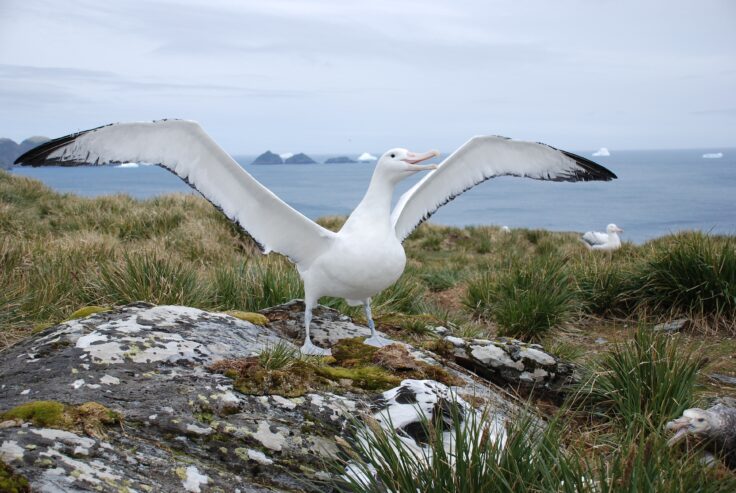Review of threats to seabirds
A review of breeding distributions, population trends, threats and key priorities for conservation actions on land and at sea for the 29 species covered by the Agreement on the Conservation of Albatrosses and Petrels (ACAP) has been published in the journal Biological Conservation. It reveals increased conservation efforts are required in order to secure a sustainable future for albatrosses and large petrels.
The research shows that the global populations of 38% of these species declined, 28% increased and 28% remained stable over the last two decades (1993-2013). The trend for 7% (2 species) is unknown.
Researchers examined a range of factors including foraging distributions, overlap with fisheries, population status and trends, and marine and terrestrial threats to evaluate current conservation priorities for these vulnerable species.
Seabirds are amongst the most globally-threatened of all groups of birds. Of the 29 albatross and large petrels species covered by the ACAP, 19 are listed as threatened by the IUCN: 11 are Vulnerable, 5 Endangered and 3 are Critically Endangered. Most of the remaining species are listed as Near Threatened (8), and just two species are listed as Least Concern.
Although conservation management has improved in recent years, the review highlights that these species still face a wide range of threats in both marine and terrestrial environments.

Bycatch continues to pose the greatest threat to albatrosses and large petrel species, with a growing number of studies highlighting the negative relationship between longline, trawl and other fisheries, and seabird population trends.
Lead author Dr Richard Phillips from British Antarctic Survey says:
“Bycatch mainly occurs as seabirds become hooked on baited hooks, trapped in nets or collide with warp cables, when scavenging for food on the sea surface. The threat is intensified because adult seabirds travel long distances, and therefore can encounter multiple fisheries during their journey.
Other threats include alien species, which have a major impact on breeding success of albatrosses and petrels at some sites, pollution (particularly the bioaccumulation of marine pollutants) and climate change.
This study highlights the need for continuing efforts to improve management and monitoring of the threats to these vulnerable seabirds, in order to secure a positive future.”
Read the paper here: doi:10.1016/j.biocon.2016.06.017
ENDS
Notes for editors:
Bycatch includes incidental mortality due to industrial longline, trawl and artisanal (small-scale) fishing.
The international Agreement on the Conservation of Albatrosses and Petrels (ACAP) came into force in 2004 and covers and 31 species, in order to maintain taxonomic and geographic coherence, the review did not cover the two species of shearwater added to the ACAP list since 2009 (Balearic shearwater Puffinus mauretanicus and pink-footed shearwater Puffinus creatopus).
The agreement aims to conserve albatrosses and petrels by coordinating international activity to mitigate known threats to their populations. There are currently 13 member countries – Argentina, Australia, Brazil, Chile, Ecuador, France, New Zealand, Norway, Peru, South Africa, Spain, the United Kingdom and Uruguay.
The International Union for Conservation of Nature (IUCN) was created in 1948 and has 1300 member organisations. The IUCN is the world’s leading provider of conservation data, assessments and analysis. Their aim is to provide knowledge and tools to enable economic development to occur alongside nature conservation.
British Antarctic Survey monitors the large and diverse populations of seabirds on Bird Island (South Georgia) and Signy Island (South Orkneys). Long-term population studies of albatross and petrels at these two sites have been carried out by British Antarctic Survey since the early 1960s.